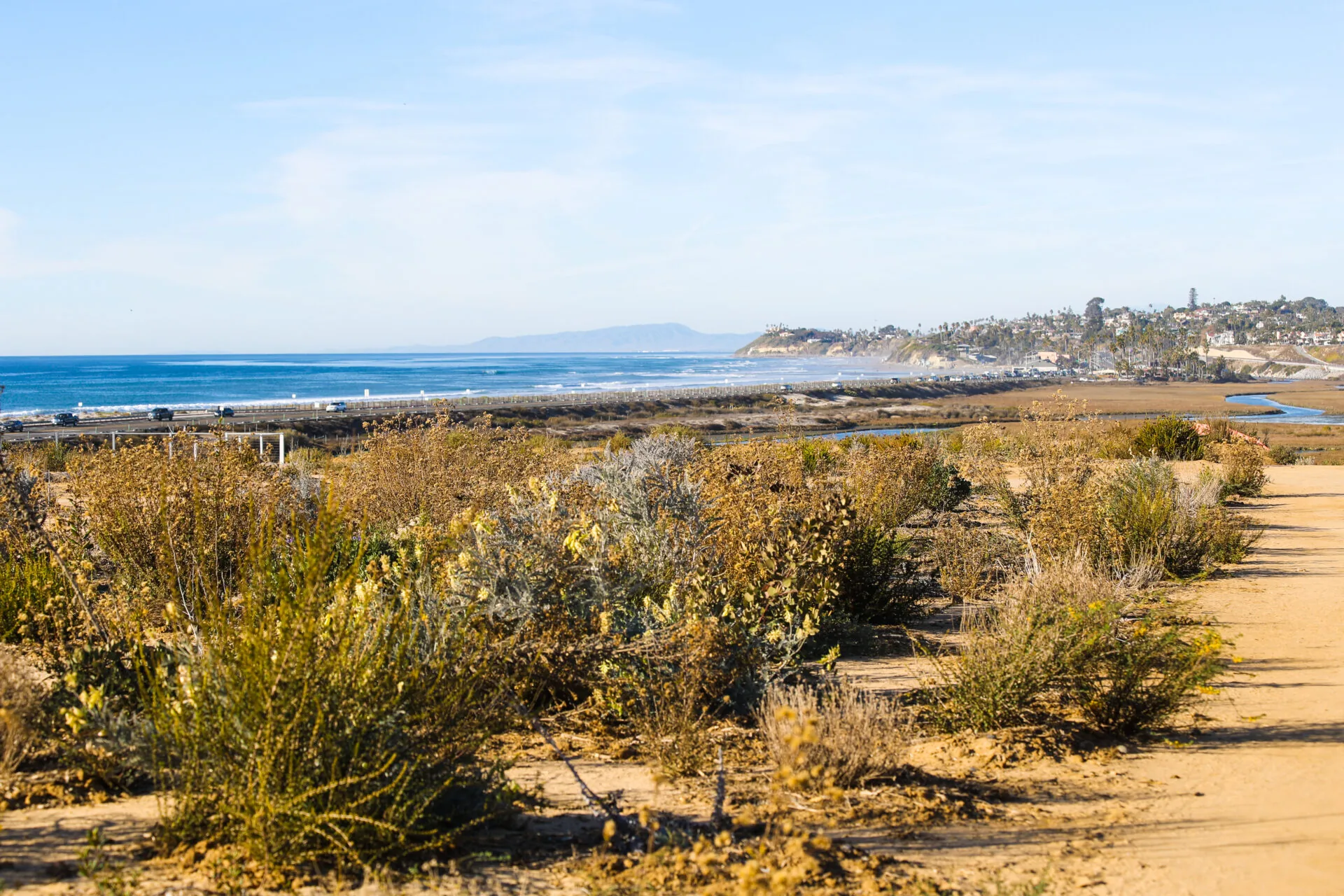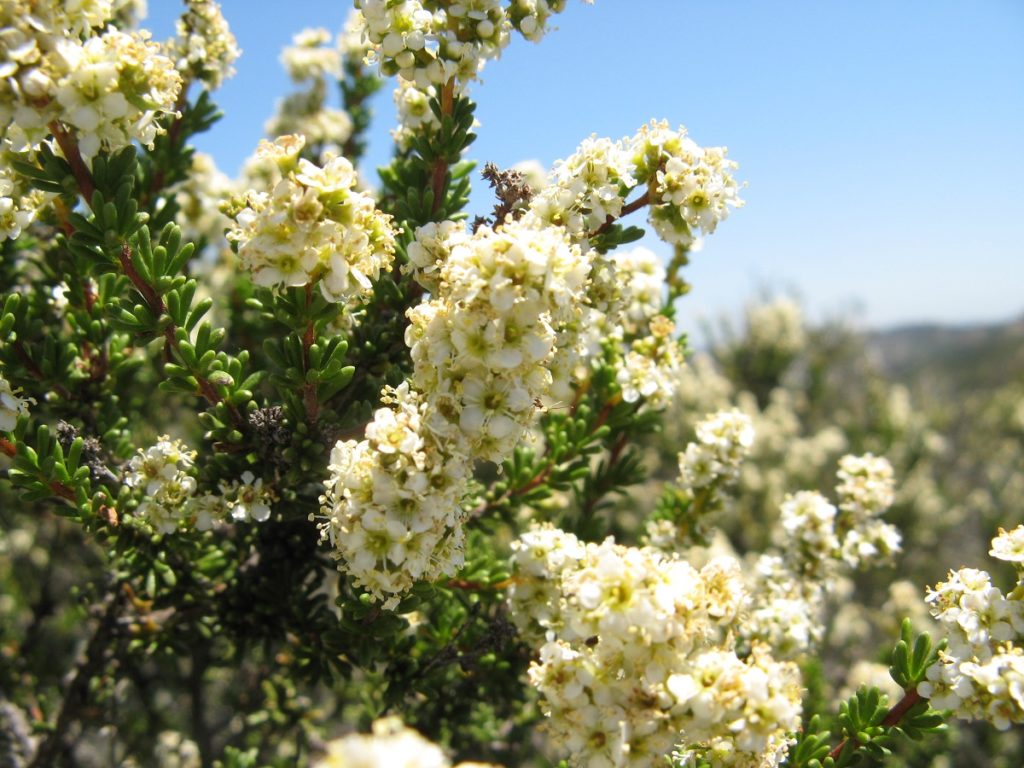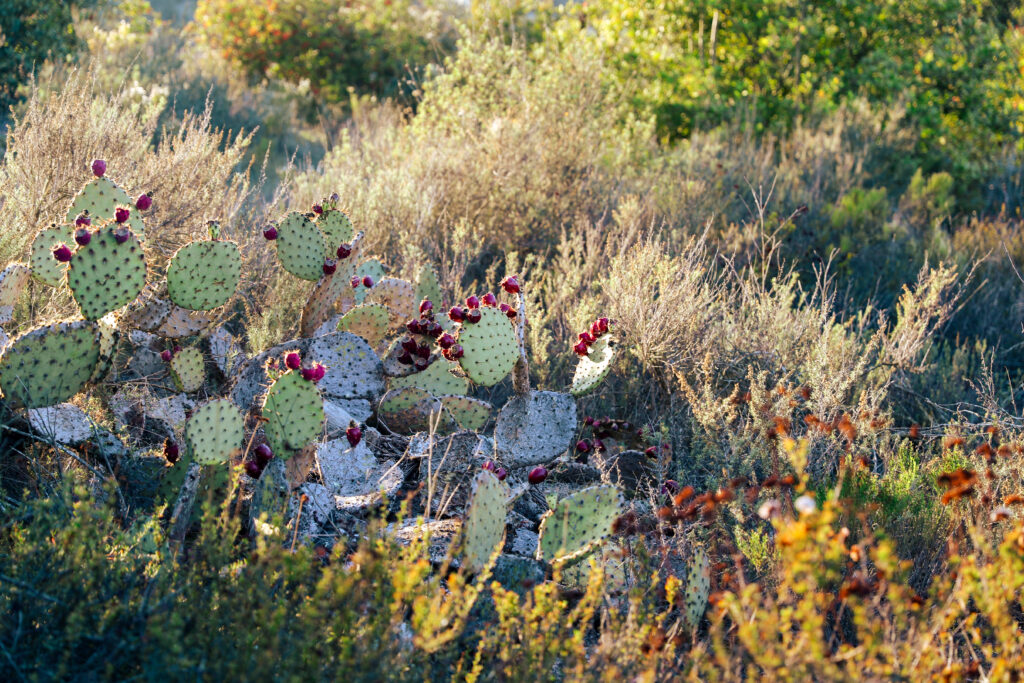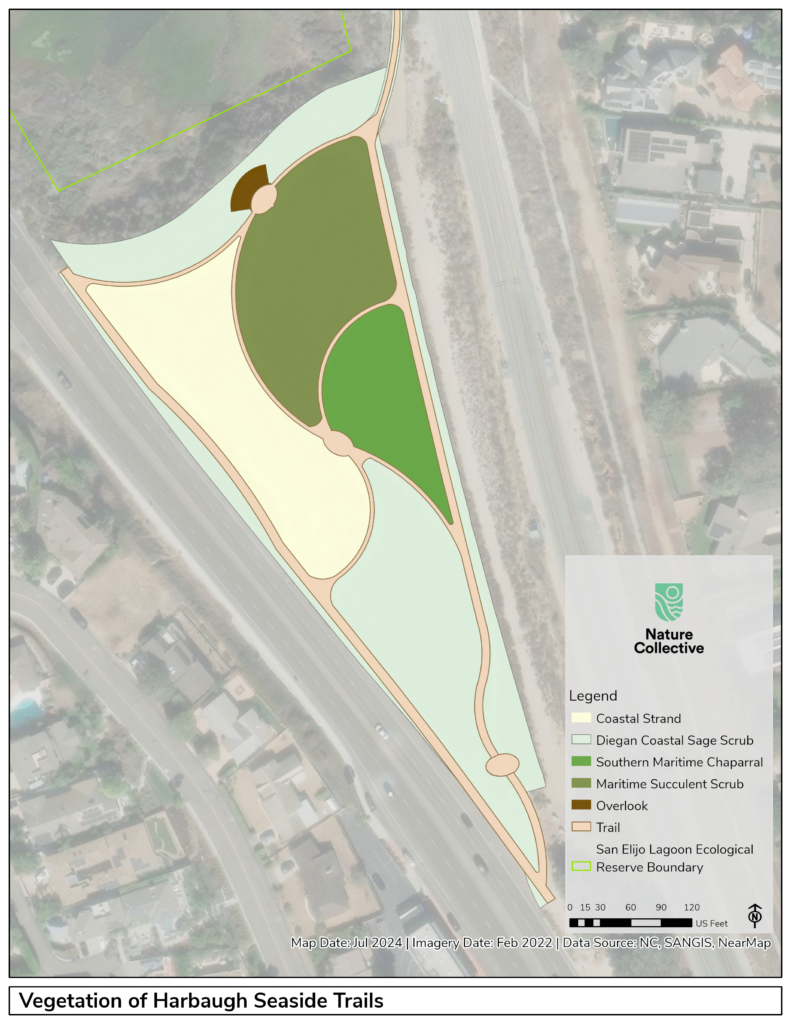San Elijo Lagoon Inlet Facing Possible Closure
Follow ( 0 Followers ) X Follow E-mail : * Follow Unfollow

In 2022-2023, Nature Collective undertook an extensive project to map the diverse plant species across an 1205-acre territory, including the San Elijo Lagoon Ecological Reserve and Harbaugh Seaside Trails. The study revealed 71 plants “alliances,” providing crucial planning and environmental adaptation data. We grouped alliances into larger entities using advanced mapping techniques, highlighting shared traits that aid our habitat conservation strategies.
Here at Harbaugh Seaside Trails, we invite you to explore four “primary plant communities,” including Diegan Coastal Sage Scrub, Southern Maritime Chaparral, Coastal Strand, and Maritime Succulent Scrub via QR codes located trail side. Experience the richness of biodiversity and join our mission to safeguard it.
 Above: Example of a plant species found in Diegan Coastal Sage Scrub habitat
Above: Example of a plant species found in Diegan Coastal Sage Scrub habitat
The Diegan Coastal Sage Scrub, home to low-growing shrubs and perennials, has a unique survival strategy, becoming dormant in summer and early fall to avoid drought. Its aromatic vegetation, including California sagebrush and California buckwheat, benefits from local fog and enhances the area’s biodiversity. It’s a vital ecosystem supporting diverse wildlife. It hosts the endangered California Gnatcatcher, known for its kitten-like call and playful Bushtits hopping plant to plant. The endangered Stephen’s Kangaroo Rat lives underground and emerges at night to hunt for seeds. All these species depend on this habitat, emphasizing why protecting it is so important.
 Above: Example of a plant found in Southern Maritime Chaparral habitat
Above: Example of a plant found in Southern Maritime Chaparral habitat
Southern Maritime Chaparral is rare in Southern California because of habitat loss. Locally, dominant plant species include chamise, and several forms of scrub oak. Southern Maritime Chaparral species tend to be evergreen; they are large shrubs and small trees with deep roots. Small, leathery leaves conserve water. These characteristics restrict the plant’s growth rates but allow it to survive the summer drought. Plants growing in this habitat rely on coastal fog for survival. The vegetation includes several threatened and endangered plants, such as the Del Mar manzanita Nuttall’s scrub oak and the wart-stemmed ceanothus, whose fragrant white blooms attract pollinators. You may notice a Spotted Towhee foraging in the leaf litter or hear the Wren Tit, often referred to as the “voice of the chaparral,” singing.
 Above: Example of a plant found in Coastal Strand habitat
Above: Example of a plant found in Coastal Strand habitat
Coastal Strand is an ocean-adjacent habitat and is part of the San Elijo Lagoon Ecological Reserve’s ecosystem, marked by beach and dune habitats, coastal bluffs, and restored and inactive dunes along Coast Highway 101. The plants found in this habitat have adapted to the windy, sandy environment with vine-like stems for anchoring and soil stabilization. Harbaugh Seaside Trails lets you observe the unique flora like the purple beach sand verbena, yellow beach primrose, and rare coast wooly heads up close. In contrast, animals, including the endangered Western Snowy Plover and the prevalent Killdeer, can more frequently be seen at the dunes at Cardiff State Beach.
 Above: Example of a plant found in Maritime Succulent Scrub habitat
Above: Example of a plant found in Maritime Succulent Scrub habitat
A greater proportion of succulent plants distinguishes the Maritime Succulent Scrub. These include cactus species such as coast barrel cactus and the western prickly pear complex western-prickly-pear and coast cholla; succulent shrubs such as cliff spurge and succulent perennials such as chalk dudleya, an eye-catching rosette of succulent leaves covered in a white waxy powder that brushes off like chalk. Plants species found here host a variety of insects and spiders who help maintain healthy soil, recycle nutrients, and pollinate flowers.

Will You Save San Diego’s Native Habitats? Native plants are vital for a healthy ecosystem. They provide optimal food and shelter for wildlife, more so than exotic plants, because they evolved to local conditions. Even past blooms, seeds, and leaves are necessary resources. San Diego’s wildlife face threats when native plants disappear.
Your generosity provides urgent resolution and may fund, groundbreaking scientific research for healthier ecosystems, native plant propagation and restoration projects for wildlife habitats, nature education programs that foster a passion for nature in children, and community engagement for preserving local environments together.
Your actions today echo in nature’s tomorrow. Will you donate now to support native plants for San Diego’s biodiversity? Make a difference by donating now.
Follow ( 0 Followers ) X Follow E-mail : * Follow Unfollow
Follow ( 0 Followers ) X Follow E-mail : * Follow Unfollow